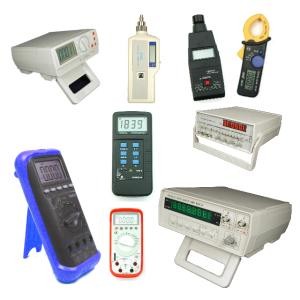Digital Multimeter Reviews
Digital Multimeter Test Equipment – Fluke Meters
Modern multimeters are often digital due to their accuracy, durability and extra features. In a digital multimeter the signal under test is converted to a voltage and an amplifier with electronically controlled gain preconditions the signal. A digital multimeter displays the quantity measured as a number, which eliminates parallax errors.

Shop For Digital Multimeters
Modern digital multimeters may have an embedded computer, which provides a wealth of convenience features. Measurement enhancements available include:
- Auto-ranging, which selects the correct range for the quantity under test so that the most significant digits are shown. For example, a four-digit multimeter would automatically select an appropriate range to display 1.234 instead of 0.012, or overloading. Auto-ranging meters usually include a facility to hold the meter to a particular range, because a measurement that causes frequent range changes can be distracting to the user. Other factors being equal, an auto-ranging meter will have more circuitry than an equivalent non-auto-ranging meter, and so will be more costly, but will be more convenient to use.
- Auto-polarity for direct-current readings, shows if the applied voltage is positive (agrees with meter lead labels) or negative (opposite polarity to meter leads).
- Sample and hold, which will latch the most recent reading for examination after the instrument is removed from the circuit under test.
- Current-limited tests for voltage drop across semiconductor junctions. While not a replacement for a transistor tester, this facilitates testing diodes and a variety of transistor types.
- A graphic representation of the quantity under test, as a bar graph. This makes go/no-go testing easy, and also allows spotting of fast-moving trends.
- A low-bandwidth oscilloscope.
- Automotive circuit testers, including tests for automotive timing and dwell signals.
- Simple data acquisition features to record maximum and minimum readings over a given period, or to take a number of samples at fixed intervals.
- Integration with tweezers for surface-mount technology.
- A combined LCR meter for small-size SMD and through-hole components.
Modern meters may be interfaced with a personal computer by IrDA links, RS-232 connections, USB, or an instrument bus such as IEEE-488. The interface allows the computer to record measurements as they are made. Some DMMs can store measurements and upload them to a computer.
The first digital multimeter was manufactured in 1955 by Non Linear Systems
